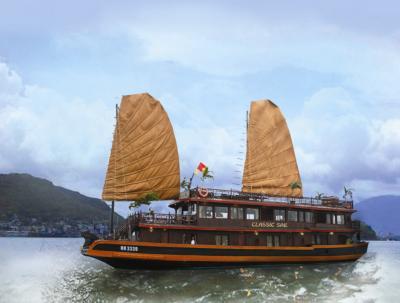Retired vehicle becomes tourist attraction
Published: 11/12/2010 05:00
longer a public transport means, xÃch lô in HCM City
has stepped down. But it should live on as a symbol of the municipal tourism.
| No In his masterpiece Truyen Kieu (The Tale of Kieu), Nguyen
Nguyen Du’s adage may be applicable to xÃch lô, a
XÃch lô originates from a French word, cyclo. Archives
In Saigon, xÃch lô marked
As Vietnam
Unfortunately, during its time of existence, xÃch lô drivers
The real reclusive time for xÃch lô came several years ago,
Although xÃch lô has lost its ubiquity, it does exist. In Saigon, groups of xÃch lô are still seen rolling on the Man-powered public transport means are still in use by the
The process in which the three-wheeled vehicle has stepped
Who will replace them when they finally retire?
Source: SGT |
Provide by Vietnam Travel
Retired vehicle becomes tourist attraction - Travel - News | vietnam travel company
You can see more
- Travel trends in 2023
- In the spring, Moc Chau is covered in plum blossoms.
- Top 3 Special festivals in Vietnam during Tet holiday - 2023
- 5 tourist hotspots expected to see a spike in visitors during Lunar New Year 2023
- 12 Days Cycling From Vietnam to Laos
- Why You Should Cycle To Cuc Phuong National Park?
- Top 10 Must-see Sights In Hanoi, Vietnam
- The Most Wonderful Destinations In Sapa
enews & updates
Sign up to receive breaking news as well as receive other site updates!
- Banh Đa Cua - a traditional Hai Phong specialty
- Exploring Lai Chau cuisine
- Hanoi ranked top 3 cuisine in the world in 2023
- Beautiful resorts for a weekend escape close to Hanoi
- Travel trends in 2023
- In the spring, Moc Chau is covered in plum blossoms.
- The Most Wonderful Destinations In Sapa
- Top 3 Special festivals in Vietnam during Tet holiday - 2023
- 5 tourist hotspots expected to see a spike in visitors during Lunar New Year 2023
- How To Make Kitchen Cleaned
-
vietnam travel
http://www.vietnamtourism.org.vn " Vietnam Tourism: Vietnam Travel Guide, Culture, Travel, Entertainment, Guide, News, and...
-
Vietnam culture, culture travel
http://travel.org.vn " Vietnam culture
-
Vietnam travel, vietnam travel news, vietnam in photos
http://www.nccorp.vn " Vietnam travel, vietnam travel news, vietnam in photos
-
Vietnam tourism
http://www.vietnamtourism.org.vn " The official online information on culture, travel, entertainment, and including facts, maps,...
-
Vietnam Travel and Tourism
http://www.vietnamtourism.org.vn/ " Vietnam Travel, Entertainment, People, Agents, Company, Vietnam Tourism information.
-
Information travel online
http://www.travellive.org "Information travel online













